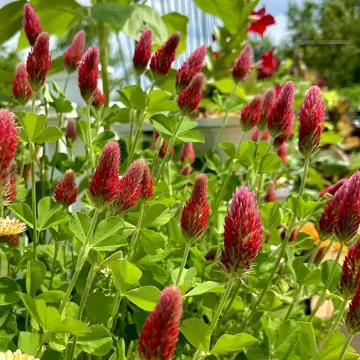What Are Cover Crops?
Cover crops, sometimes called green manure, are plants grown primarily to cover the soil rather than for harvest. They help prevent erosion, suppress weeds, improve soil fertility and structure, and increase biodiversity in the garden. Popular cover crops include legumes (such as clover and vetch), grasses (like rye and oats), and brassicas (such as mustard and radishes).
Benefits of Cover Crops
- Weed Suppression: Cover crops can outcompete weeds for sunlight, water, and nutrients, reducing the need for manual weeding or herbicides.
- Soil Improvement: Leguminous cover crops, like clover and vetch, fix nitrogen in the soil, naturally fertilizing it. Grasses like rye add organic matter, improving soil texture and water retention.
- Erosion Control: Cover crops protect soil from erosion caused by rain and wind, especially in areas with heavy rainfall or sloped gardens.
- Pest Management: Certain cover crops can repel or trap pests. Mustard greens, for example, are known for their biofumigant properties, which can help control soil-borne diseases and pests.
- Biodiversity: Incorporating cover crops increases the diversity of plant life in the garden, which can attract beneficial insects and pollinators.
Selecting the Right Cover Crop
Choosing the right cover crop depends on your garden's needs, climate, and season. Here's a quick guide to common cover crops:
- Legumes (e.g., clover, peas, vetch): Excellent for fixing nitrogen in the soil, improving fertility for the next crop. Best for gardens needing a natural boost in nitrogen.
- Grasses (e.g., rye, oats, wheat): Good for adding organic matter and improving soil structure. They are cold-tolerant and can be grown over winter.
- Brassicas (e.g., mustard, radish): Known for biofumigant properties, suppressing soil-borne diseases and pests.
- Buckwheat: A fast-growing summer cover crop that suppresses weeds and attracts pollinators. It can be planted in between growing seasons or in areas not actively cultivated.
When to Plant Cover Crops
- Fall: Plant cold-tolerant cover crops like winter rye or clover in late summer to early fall. These crops will grow through the fall, cover the soil over winter, and resume growth in the spring.
- Spring: Sow quick-growing cover crops like buckwheat or field peas early in the spring to prepare the soil for summer planting.
- Summer: Warm-season cover crops like cowpeas or soybeans can be sown after spring crops are harvested, allowing the soil to rejuvenate during the hot months.
- Between Crops: If you have a gap in your planting schedule, consider using a fast-growing cover crop like buckwheat to fill in the space and enrich the soil.
How to Plant Cover Crops
- Prepare the Soil: Lightly till or loosen the soil to create a seedbed. Remove any existing weeds to prevent competition.
- Broadcast Seeds: Scatter the seeds evenly across the soil surface. You can hand-sow smaller areas or use a broadcast spreader for larger plots.
- Rake and Water: Lightly rake the seeds into the soil and water them to promote germination. Keep the soil moist until the seeds have sprouted.
Managing Cover Crops
- Mowing: When the cover crop reaches maturity, mow it down to prevent it from going to seed. This step also creates organic matter for the soil.
- Tilling: To incorporate the cover crop into the soil, lightly till it under. This practice, known as "green manuring," enriches the soil with organic matter. Allow 2-4 weeks before planting the next crop to give the organic material time to break down.
- No-Till Method: For a less disruptive approach, simply cut down the cover crop and leave the clippings on the soil surface as mulch. This method conserves soil structure and moisture while adding nutrients.
Cover Cropping Tips for Success
- Timing is Key: Plan your cover crop planting to fit with your main garden schedule. Consider the growing season and when you'll need the soil for other crops.
- Diverse Mixes: For maximum benefit, use a mix of cover crops. For example, a combination of legumes and grasses can provide both nitrogen fixation and organic matter.
- Monitor Growth: Monitor the growth of your cover crops. Mow or till them under before they go to seed to prevent unwanted reseeding.
- Rotate Crops: Rotate cover crops with your garden plants to prevent the buildup of pests and diseases associated with specific plant families.
Incorporating cover crops into your home garden is a natural, cost-effective way to improve soil health, manage weeds, and enhance biodiversity. You can create a more sustainable and productive growing environment by selecting the right cover crop for your garden's needs and managing it properly. Cover crops are a valuable addition to any home garden, whether preparing for the next growing season or simply looking to improve soil fertility.

